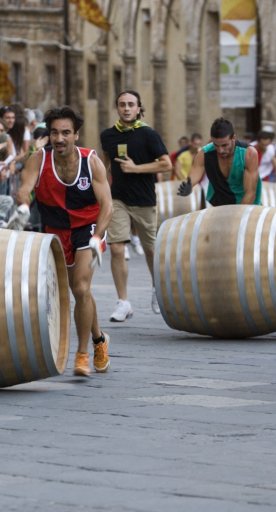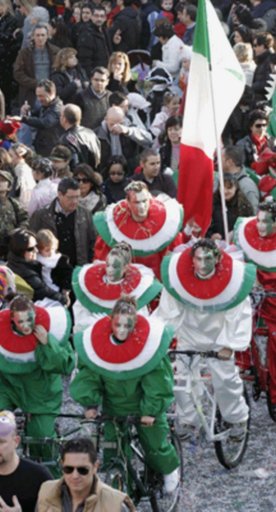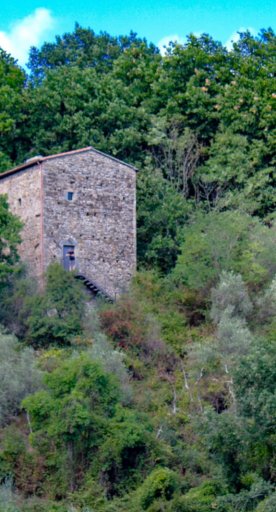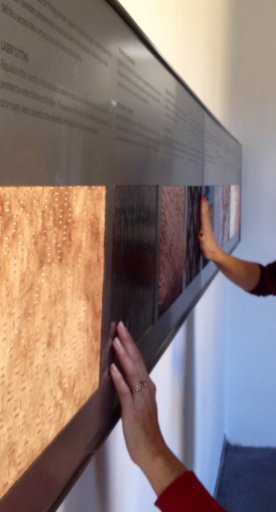Livorno: what to see and do
Read our tips and choose what to visit in Leghorn
Livorno is the most important port city in Tuscany. Situated on the Mar Ligure, it's 20 kilometers far from Pisa and 100 from Florence.
Its history is long: it was founded in 1017 as a coastal fortress to defend Pisa that, at that time, was one of the four Maritime Republics in Italy. During the Middle Ages, Livorno belonged to Genoa and then to Florence: the evidence of those times is the couple of towers and the wall inside the Fortezza Vecchia (Old Fort), later built in the sixteenth century.
-
1.Main attractions
-
2.Curiosities

In the Renaissance, Livorno was built up under the Medici family - and planned by the architect Bernardo Buontalenti - as the “ideal Italian Renaissance city”, with fortified walls, ramparts and canals on the waterfront known as Vecchia Darsena.
Maybe you already know that Livorno is also called Leghorn, because Britain's cultural connections with Tuscany increased in the eighteenth century. Going on in its history, the city was bombed during the Second World War with huge damage to monuments and buildings.
Livorno has always been considered a cosmopolitan and multicultural city, because it was a free port and duty-free area. It has always been a tolerant city, with freedom of religion and many Jewish immigrants. In this town, the first non-Roman Catholic church in Tuscany was built, i.e. the Chiesa della Santissima Trinita, based on Greek Orthodox religion.
Main attractions

Terrazza Mascagni: named after the great composer Pietro Mascagni, it is a walkway over the sea with checkered flooring. Facing the sea, to the right there’s the Livorno Aquarium; to the left you'll find the famous Bagni Pancaldi, a seaside resort founded in 1846, once frequented by the Savoy princes and others aristocrats.
Quartiere Venezia (New Venice District): created in the 1600s, it is located in the middle of the city and today it is a lively neighborhood. It retains the original bridges, lanes, canals, houses and warehouses connected to the harbor. This district is the set for "Effetto Venezia", a festival featuring shows, food and wine events, traditional markets that takes place every year in July.
Four Moors statue: made between 1623 and 1626 by Pietro Tacca, it is a monument that show four bronze Moors in chains at the base of a pedestal, where a marble statue of the Grand Duke Ferdinand I (made by Giovanni Bandini) stands. The statue is a symbol of victory over the pirates in the Tuscan seas.
Fortezza Vecchia (Old Fortress): a fortification that stands at the edge of the Medici port. It is an elegant fortress that has undergone several architectural variations throughout the centuries.
Fortezza Nuova (New Fortress): the old red brick fortress built during the Medici period designed by Bernardo Buontalenti, built to defend Livorno from the pirate attacks.

Giovanni Fattori Civic Museum: together with the municipal library, this civic museum is located in Villa Fabbricotti, displaying the paintings of Giovanni Fattori. Here, visitors can appreciate Tuscan art from the nineteenth and twentieth centuries and works by several members of the Macchiaioli school.
Accademia Navale (Italian Naval Academy): a coeducational military university, responsible for the technical training of military officers of the Italian Navy. The Naval Academy stands on the former site of the St. James’ hospital, built in the 1640s for the quarantine of the navy soldiers coming from Asia.
The harbor: both commercial and touristic, it is still one of the greatest sources of income for the economy of the town. The Port of Livorno is one of the largest Italian seaports and one of the main seaports in the Mediterranean Sea.
Livorno Cathedral: dedicated to Saint Francis, it stands in Piazza Grande. The façade was completely rebuilt after bombings in World War II, with a portico supported by rounded arches, some of which were made by Inigo Jones, the father of English Renaissance architecture.
Piazza della Repubblica: this square of around 7.5 km² is one of the biggest in Livorno and from there you can have a great view over the Fortezza Nuova, Quartiere Venezia and Fosso Reale (the main canal of the district).
The synagogue and the Jewish community: Livorno had no ghettos. At the turn of the sixteenth century the ‘Livornina Law’ was approved, creating a Jewish settlement in the city. This law guaranteed worship freedom to all the Jews settled in the port town. The Jewish tradition therefore has a long history in Livorno. The actual synagogue was built in 1962 by Angelo di Castro.
Cisternone: it is a monumental neoclassical tank built in the first half of the nineteenth century by the architect Pasquale Poccianti for Livorno’s water supply.
Livorno Aquarium: it is a paradise for anyone curious about life under the sea. Right on the seafront, it is within the magnificent Mascagni Terrace area, in front of the Ligurian Sea Cetacean Sanctuary. There you'll see a reconstruction of marine environments, a dozen tanks showcasing biodiversity, turtles, sharks and tropical fishes.
Orto Botanico del Mediterraneo: a botanical garden located in the grounds of the Museum of Mediterranean natural history in Livorno. It contains groups of typical plants from various locations on the Mediterranean Sea.
Old English Cemetery: the oldest foreign Protestant cemetery in Italy. It is close to the Waldensian Church and to the formerly Anglican church of St. George.


Curiosities
People from Livorno speak a vernacular language that is a variant of the Tuscan dialect. There is also a satirical magazine called Il Vernacoliere nationally distributed.



















































































